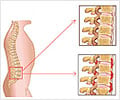Diagnosis
There does not exist any definite diagnostic criteria to detect Reactive Arthritis. Physical examination of the patient is the first and the most important of the diagnostic methods. The more the symptoms present in a patient the more accurate will be the diagnosis. The patient’s history of infections is recorded and the causes of inflammations are looked into. Typically arthritis manifests three weeks after enteric infection. An enteric infection can cause dysentry due to several Shigella, Salmonella, Yersinia, and Campylobacter species. Sometimes it can becaused by non-enteric infection with bacteria such as Clostridium difficle or by genital infection with Chlamydia trachomatis, and possibly by other agents as well.
Some of the effective diagnostic methods are mentioned below-
- A swab may be taken of the throat, urethra or cervix to culture and study the causative organism.
- Culturing of the stool or urine samples may also be undertaken.
- An aspirate of the synovial fluid may be taken from the affected knee to be studied.
- A blood test may be carried out to analyze the presence of the genetic marker HLA-B27. This gene is present in 75% of all patients with Reactive Arthritis.
- Imaging studies such as Xray and MRI are often employed. X- ray of the lower spine or the pelvic area is often taken.
- MRI is another tool that is employed during the diagnosis of Reactive Arthritis.
Some markers -
- Elevated erythrocyte sedimentation rates (ESR)
- Elevated WBC counts, usually up to 20,000 WBCs/cu mm; and mild anemia along with
In some patients, antinuclear antibodies, C-reactive protein, rheumatoid factor, and circulating immune complexes may be present.












